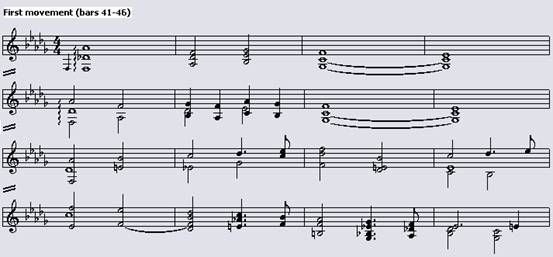Example 1: Second
subject of the first movement

Abraham, like critics before him, also felt that Chopin's
sonata opus 35 was not comparable with the sonatas of the great classical
tradition. His reasoning was that Chopin's conceptions of form and thematic
development were too radically different from those of Beethoven and the
earlier classical masters who had created the sonata, for him to be able to
cast his ideas successfully in a classical form. He sees Chopin's sonatas as
affairs of sequence, variation, and modulation, "...swept along by powerful winds
of improvisatory inspiration and worked out with fine attention to detail."
In conclusion, he states that "...here again Chopin must be judged not as an
inferior successor of Beethoven but as the brilliant forerunner of Liszt and
Wagner."
Thus far, a sample of opinions concerning Chopin's opus 35
have been presented and critically evaluated. It is evident that most critics
had serious reservations about the work, the most common being a lack of
structural coherence and thematic connection between the four movements of the
sonata. In connection with the latter, it should be highlighted that this need
not necessarily be a criterion for sonata-cycle status, as is the case in the
sonatas of Haydn and Mozart. The writings of Hugo Leichtentritt can, however,
be interpreted as the beginning of a turning point in the reception of this
sonata, as well as the beginning of the shift from criticism to analysis. In
Chapters